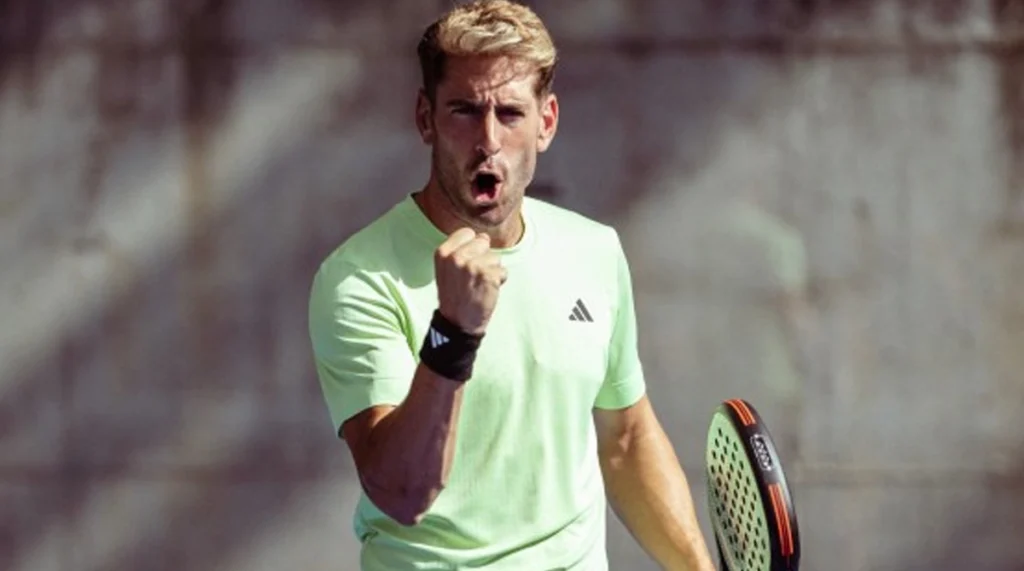
Comprehensive Guide to Choosing the Right Padel Racket
Choosing the right padel racket can significantly impact your game, whether you’re a beginner or an advanced player. With numerous brands, models, and technologies available, it can feel overwhelming to find the racket that best suits your playing style and skill level. This guide will walk you through the key factors to consider when selecting a padel racket and help you make an informed decision.
Key Factors to Consider When Choosing a Padel Racket
-
Racket Shape
The shape of a padel racket affects its balance, power, and control. There are three main shapes:-
Round: These rackets offer more control and a larger sweet spot, making them ideal for beginners and defensive players. The balance point is closer to the handle, providing greater control over shots.
Best for: Beginners or players seeking precision and control. -
Diamond: These rackets have a smaller sweet spot and are designed for more powerful shots. The balance point is at the top of the racket, allowing for more aggressive play. However, they are less forgiving, requiring more precision.
Best for: Advanced players or those who prioritize power. -
Tear Drop: A hybrid between round and diamond shapes, tear drop-shaped rackets offer a balance between power and control. They have a medium sweet spot and are suitable for versatile play.
Best for: Intermediate players or those who want a balance between power and control.
-
Round: These rackets offer more control and a larger sweet spot, making them ideal for beginners and defensive players. The balance point is closer to the handle, providing greater control over shots.
-
Racket Weight
Padel rackets typically range from 350 to 385 grams, and the weight you choose can affect both maneuverability and power:-
Lighter Rackets (350-370 grams): Easier to maneuver, lighter rackets are ideal for players who rely on speed and quick reflexes. They also reduce the risk of injury due to overuse or strain on the arm.
Best for: Beginners or players with a defensive playing style. -
Heavier Rackets (370-385 grams): These rackets generate more power on smashes and offensive shots but can be harder to control. Heavier rackets are better suited for experienced players who can handle the additional weight.
Best for: Advanced or aggressive players.
-
Lighter Rackets (350-370 grams): Easier to maneuver, lighter rackets are ideal for players who rely on speed and quick reflexes. They also reduce the risk of injury due to overuse or strain on the arm.
-
Material
The materials used in the construction of the racket can impact durability, flexibility, and overall performance:- Carbon Fiber: This material is commonly used in high-end rackets because it offers excellent strength, durability, and control. It’s often found in the frame of the racket, helping to withstand impact over time.
- Fiberglass: More flexible than carbon fiber, fiberglass provides more comfort and ease of play. It’s commonly used in rackets designed for beginners or those looking for a softer feel.
- EVA Foam vs. Polyethylene (PE) Foam: The core of a padel racket is typically made from EVA foam or PE foam. EVA foam is firmer and offers more control, while PE foam is softer and provides greater comfort and absorption on impact. Beginners may prefer a softer core for its forgiveness, while advanced players might opt for a firmer core for better precision.
-
Balance
The balance of a racket refers to where the weight is distributed. There are three main balance types:-
Low Balance: Rackets with low balance are easier to maneuver and provide more control. The weight is concentrated closer to the handle, making it easier to react to fast volleys.
Best for: Defensive players or beginners. -
High Balance: Rackets with high balance concentrate the weight at the top, which generates more power in smashes and overhead shots. However, they require more effort to control.
Best for: Aggressive players. - Even Balance: These rackets offer a balance between power and control, making them ideal for versatile players who switch between offensive and defensive play.
-
Low Balance: Rackets with low balance are easier to maneuver and provide more control. The weight is concentrated closer to the handle, making it easier to react to fast volleys.
Understanding Playing Style and Level
- Beginner Players: Should focus on control and ease of play. Look for a round-shaped racket with a lower weight and a soft core (PE foam). This combination will help you focus on technique while minimizing strain on your arm.
- Intermediate Players: A tear drop-shaped racket with medium weight and balanced power and control is ideal. A racket made with a mix of carbon fiber and fiberglass is a great choice for players developing their style.
- Advanced Players: Diamond-shaped rackets with a firmer EVA core and high balance offer the power and precision needed for competitive play. If you prefer control over power, a round-shaped racket with a carbon fiber frame may be a better fit.
Testing Rackets
One of the best ways to ensure you’re choosing the right racket is to test different models before making a decision. Many stores and clubs offer the opportunity to demo rackets, allowing you to experience the feel and performance of different shapes, weights, and materials in real-game situations.
Where to Find Expert Advice and Test Padel Rackets in Estonia
If you’re looking for expert advice and a chance to test different padel rackets in Estonia, there are a couple of excellent options:
-
Padelikliinik
Padelikliinik provides professional coaching and equipment consultations, helping you find the right racket based on your individual playing style and skill level. You can also test rackets on-site before making a purchase.
Website: Padelikliinik -
Padelipood
Padelipood offers a wide selection of padel rackets, including top brands like Bullpadel. Their knowledgeable staff can guide you through the selection process, and you can demo rackets before buying to ensure it suits your game.
Website: Padelipood
Choosing the right padel racket can elevate your game and make a significant difference in your overall performance. By considering your skill level, playing style, and preferences in weight, balance, and materials, you can find the perfect racket to help you succeed on the court.



